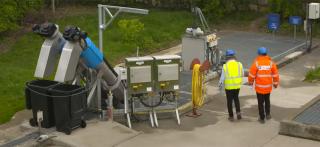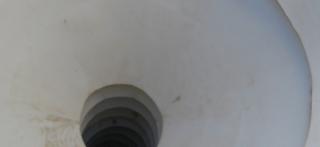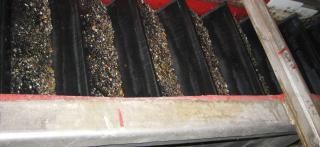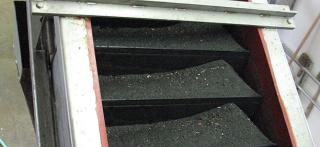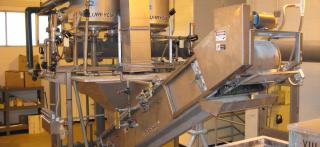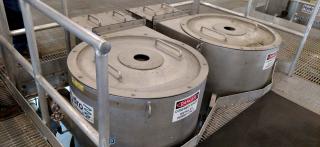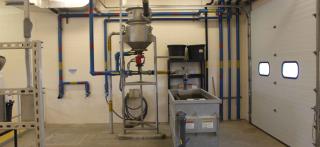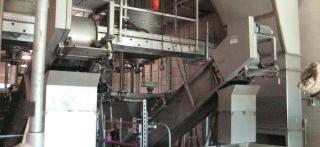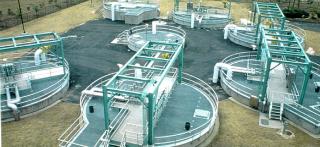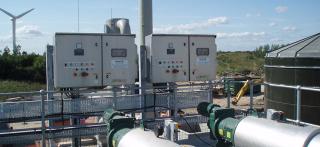
Green Lakes, WI HeadCell Protects Downstream Processes
HeadCell® / TeaCup® / Decanter system provides ultimate plant protection.
Situation
The City of Green Lake is located on the north side of Big Green Lake in Green County Wisconsin, about 30 miles (50 km) west of Fond du Lac. This quaint community is the oldest resort community west of Niagara Falls, and has been the county seat since the mid 1800’s. Green Lake is known for its fishing and recreational tourist community during the summer months.
With a population of just over 1,100 the town still retains its charm as a vacation destination. Activities include camping, biking, hiking, golf and water sports of all kinds. Big Green Lake is known for its excellent fishing with several state record catches coming from the pristine waters. Big Green Lake is the state’s deepest natural inland lake at 237 feet (72 m) and covers more than 11.4 square miles (30 km2). Warm summer weather brings visitors from throughout the Midwest to enjoy the cool lake breezes.
In 2006 the city began planning for a significant upgrade to its wastewater treatment plant. The design team of Kunkel Engineering Group and McMahon Associates, Inc. was hired to design the plant improvements.
Problem
The original plant was built in 1983 and did not include grit removal. As a result, grit accumulated throughout the plant process tanks, particularly the aeration basin. This required periodic shutdown of the process tanks and hiring a contractor to vacuum the deposited grit from the tanks. The pending upgrade would include the use of an SBR treatment system as well as an upgrade to sludge dewatering.
Plant personnel were concerned about grit settling in the process tanks, as well as grit wearing on the belts and rollers of the new belt filter press that would be used for sludge dewatering. The impact of these problems drove the plant to include grit removal in their upgrade project. The city was familiar with mechanically induced vortex grit removal systems and initially thought that it would be the technology of choice.
At the direction of the project design team, plant personnel visited a hydraulically driven HeadCell® grit removal system in northern Illinois. The City liked the HeadCell® system because, unlike the mechanically induced vortex grit system, it had no moving parts in the basin. The only moving part was the grit pump which could be located in an easily accessible area.
Solution
Based on the positive feedback given by the operations personnel at the Illinois plant, the city wanted to consider the Hydro International system for their pending upgrade. The city took an innovative approach to bidding the project in which designs were prepared for both the Hydro International system, which included the HeadCell®, TeaCup® and Decanter, and a mechanically induced vortex grit removal system with a grit washing and dewatering classifier.
The bidding contractors were required to include the Hydro International system in their base bid, while providing an alternate bid for the mechanically induced vortex system. The low bidding contractor provided an alternate bid to add $28,000 to provide the mechanically induced vortex system.
Equipment and construction costs for the mechanically induced vortex system contributed to the difference. The city elected to not accept the alternate bid and instead use the Hydro International grit removal system.
The HeadCell® is a modular, multiple-tray settleable solids concentrator that removes coarse and fine grit with minimal headloss. The high-efficiency flow distribution header evenly distributes influent over multiple stacked conical trays. The stacked trays greatly increase surface area in a very small footprint. Long approach channels are not needed reducing concrete and installation costs. The HeadCell® design would allow the plant’s peak flow of 1.75 Mgal/d (77 L/s) to be treated in a 9x9 foot (2.7x2.7 m) footprint.
The Outcome
Installation went smoothly and the system was commissioned in early 2008. The operations personnel have been very happy with the project and the plant is producing effluent well below permit levels. The volume and quality of the output grit has been a pleasant surprise to the operations people.
Grit volume increases significantly during wet weather flows. Over 3 ft3 (0.85 m3) of grit is removed each week from this plant under average flow conditions 0.5 Mgal/d (22 L/s).

